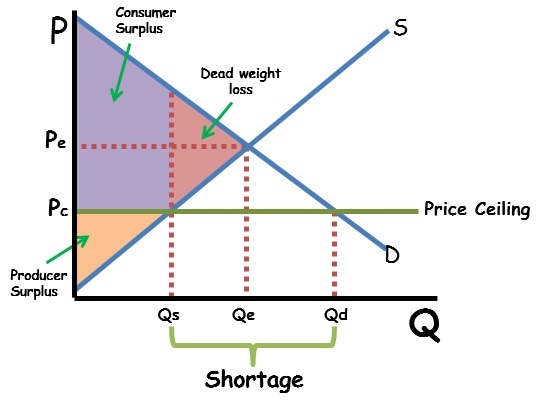AP Economics - Micro
Test #2 Review
Consumer and Producer Surplus
Clifford Video on Surpluses and Deadweight Loss
Consumer Surplus is the difference between the price that consumers pay and the price that they are willing to pay.
Producer surplus is a measure of producer welfare. It is measured as the difference between what producers are willing and able to supply a good for and the price they actually receive. It is obtained when market price is greater than the price producers are prepared to supply at.
Deadweight loss refers to the loss of economic efficiency when the equilibrium outcome is not achievable or not achieved. In other words, it is the cost born by society due to market inefficiency.

When producers raise their prices because the do not want to take the price of an added new tax, consumer surplus decreases because they are taking the cost passed on to them by the producers.
Elasticity
Elasticity is the measurement of the proportional change of an economic variable in response to a change in another. It shows how easy it is for the supplier and consumer to change their behavior and substitute another good, the strength of an incentive over choices per the relative opportunity cost.